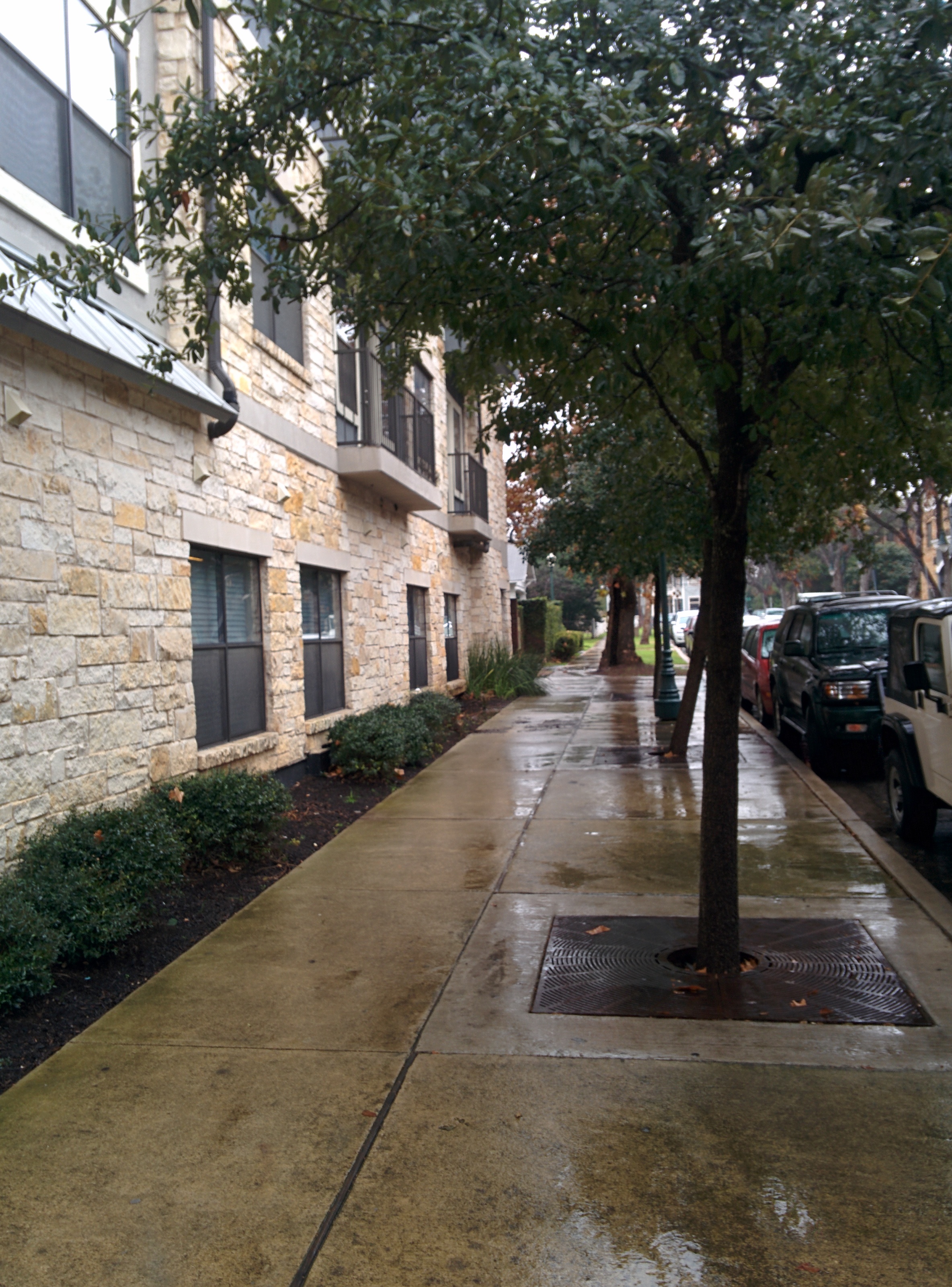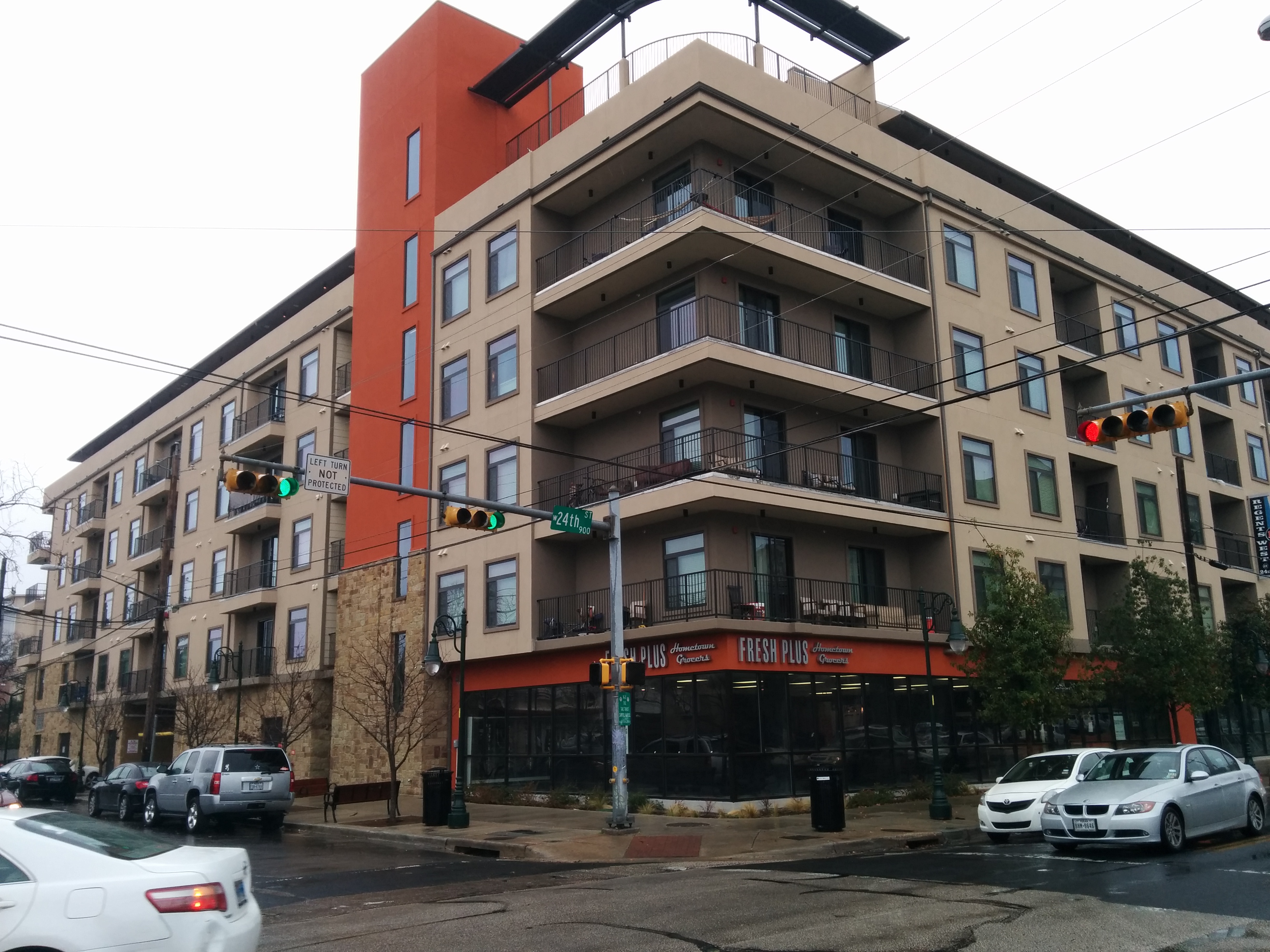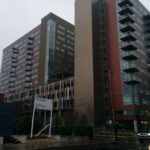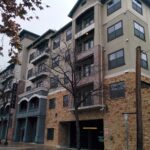In 2004, Austin adopted a new set of rules and design guidelines allowing developers to build larger apartment buildings in West Campus with fewer parking spaces required, as long as they provided a few additional benefits like better sidewalks and street trees and set some of the apartments aside for low-income students. Unlike the larger apartment complexes Austin allowed on major streets like Burnet or Lamar, these homes are scattered throughout the neighborhood. One of the ideas was to provide a place where students could more easily walk, bike, or bus to campus rather than drive. This is in fitting with ideas of environmental groups like the Sierra Club.
What’s happened since then?
The neighborhood has been under almost constant construction, with multiple apartment complexes going in at the same time.
New apartment complexes have sprung up of all shapes and sizes
The sidewalks have gotten better with street trees providing shade in the summer heat:

Neighborhood-scale shops have opened up on the ground floor of many of these buildings, from small grocery stores to student staples like copy shops, convenience stores, liquor stores, and cheap restaurants, as well as yoga studios, martial arts studios, and other small retail.

The total number of people living there has jumped, with population jumping more than 36% between 2000 and 2010 and well beyond that now. (We’ll have to wait until the next census for accurate figures.)
As for the driving? A recent study of graduate student housing points to very good signs.
| Group | Personal cars | Walking and Biking | Other |
|---|---|---|---|
| West Campus grad students | 9% | 67% | 24% |
| Other grad students | 37% | 12% | 51% |
| Whole city | 73% | 4% | 23% |
The theory works! When you provide people quality walking infrastructure in a dense urban fabric, they really do take advantage of it. Could this kind of dense, walkable neighborhood allow more of the rest of us to leave the car at home–or drop a car from their household altogether? Could Austin turn the tide toward a more environmentally sustainable future? We’ll never know if we don’t try.



2 thoughts on “Austin created a dense student neighborhood—what happened next will warm your environmentalist heart”
Comments are closed.